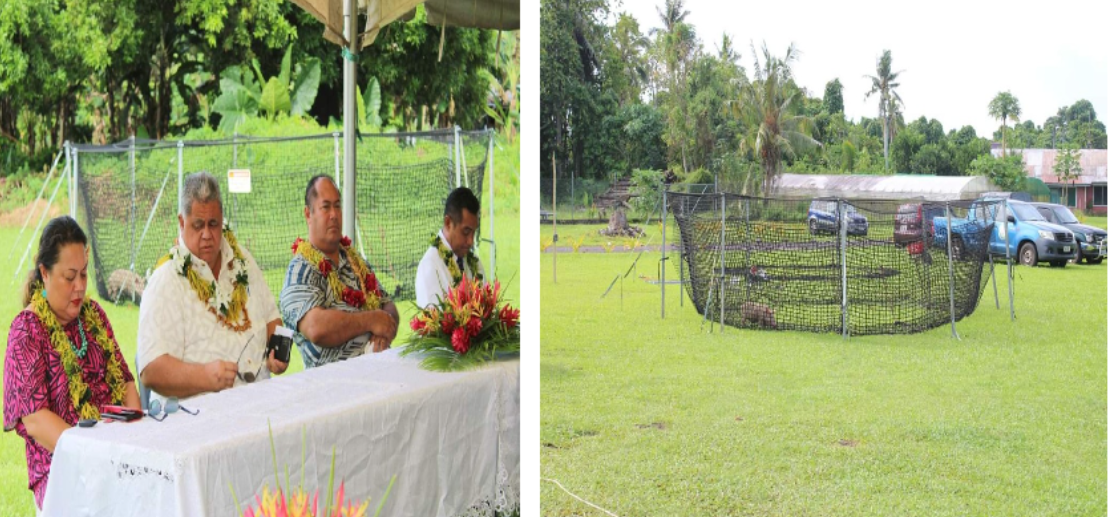The presence of feral or wild pigs poses a significant challenge for many farmers in Samoa.
The Agriculture Census 2020 recorded the total number of agriculturally active households
or families growing crops in Samoa of 26,776. Over 60% of these families have identified
feral pigs as the primary challenge affecting the development of their crop farms for more
than a decade. The severity of this issue has elevated discussions to higher levels including
Cabinet meetings, resulting in the loss of crop harvest and the rapid decline in production
figures of some of the major crops, especially taro. The decline is predominantly attributed
to the rising number of feral pigs.
For that reason, the Ministry of Agriculture and Fisheries made the crucial decision to
address this issue by introducing the utilization of Pig Traps. A ceremony to launch the
installation of Samoa’s first ever pig traps was held on the 3 rd of October 2023 in Savaii.
Two traps were procured under a fully funded project by the Australian government (MDF),
to trial the effectiveness of this idea in Sapapalii and Satupaitea. Now, 10 additional traps
procured by the Scientific Research of Samoa were just launched in April this year and the
plan is to install them in selected districts/villages in Upolu.
Continuous inspections, monitoring and evaluations of these traps by both MAF and
individual village committees has indicated a successful rate of 80 to 90 percent. Visual
documentations including pictures and recorded footage from these traps stated tangible
evidence that a trap can hold up to 20 pigs in a single catch. An inferred camera is also
installed on the trap or a nearby tree to observe the movement and the progress of pigs in
the trap around the clock.
A double wall, heavy duty trap consists of a 20ft long base net with dynamic drop strength
of more than 8,000-ft-lbs, as well as a vinyl-coated easy pull cable seam that makes
opening and closing your trap a piece of cake. A 2-ft wide trap cap that can be clipped or
sewn in covers approximately 30% of the net opening and keeps jumpers inside the trap.
Yet, the success of catching pigs with these traps strongly depends on where they are
placed. A manual guide for piloting the use of pig traps in specific districts and for
collaborating with districts’ Fono Fa’avae Offices in monitoring and sustaining these
valuables assets is in place.
The Ministry continues to plan to acquire more traps through various projects to maximize
the effectiveness of this initiative. However, it strongly advices and encourages the practice
of raising pigs in enclosed pens or fenced areas to further mitigate risks.

